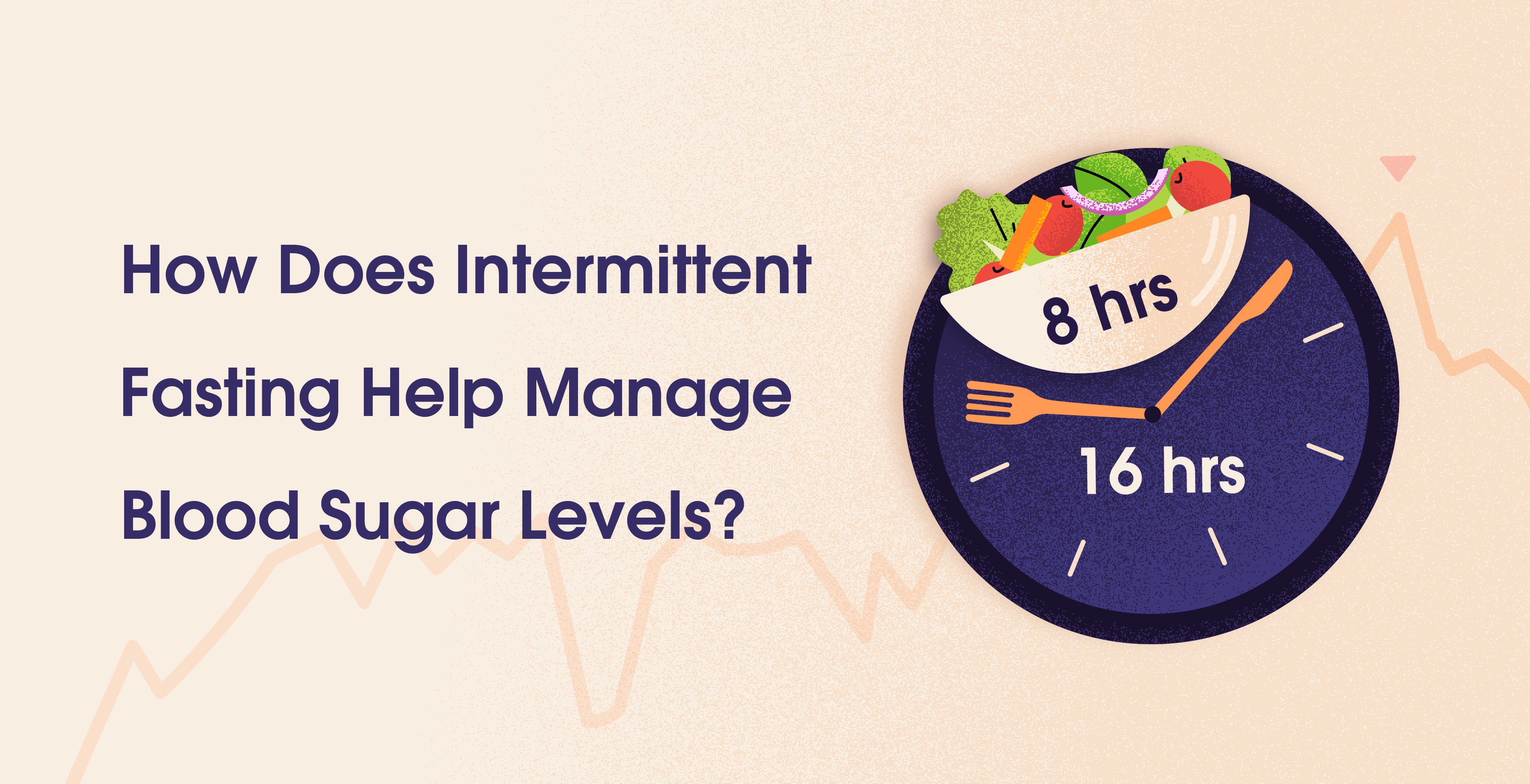Tips for Managing Glucose Spikes
Apr 23, 2024
Ashima Raizada
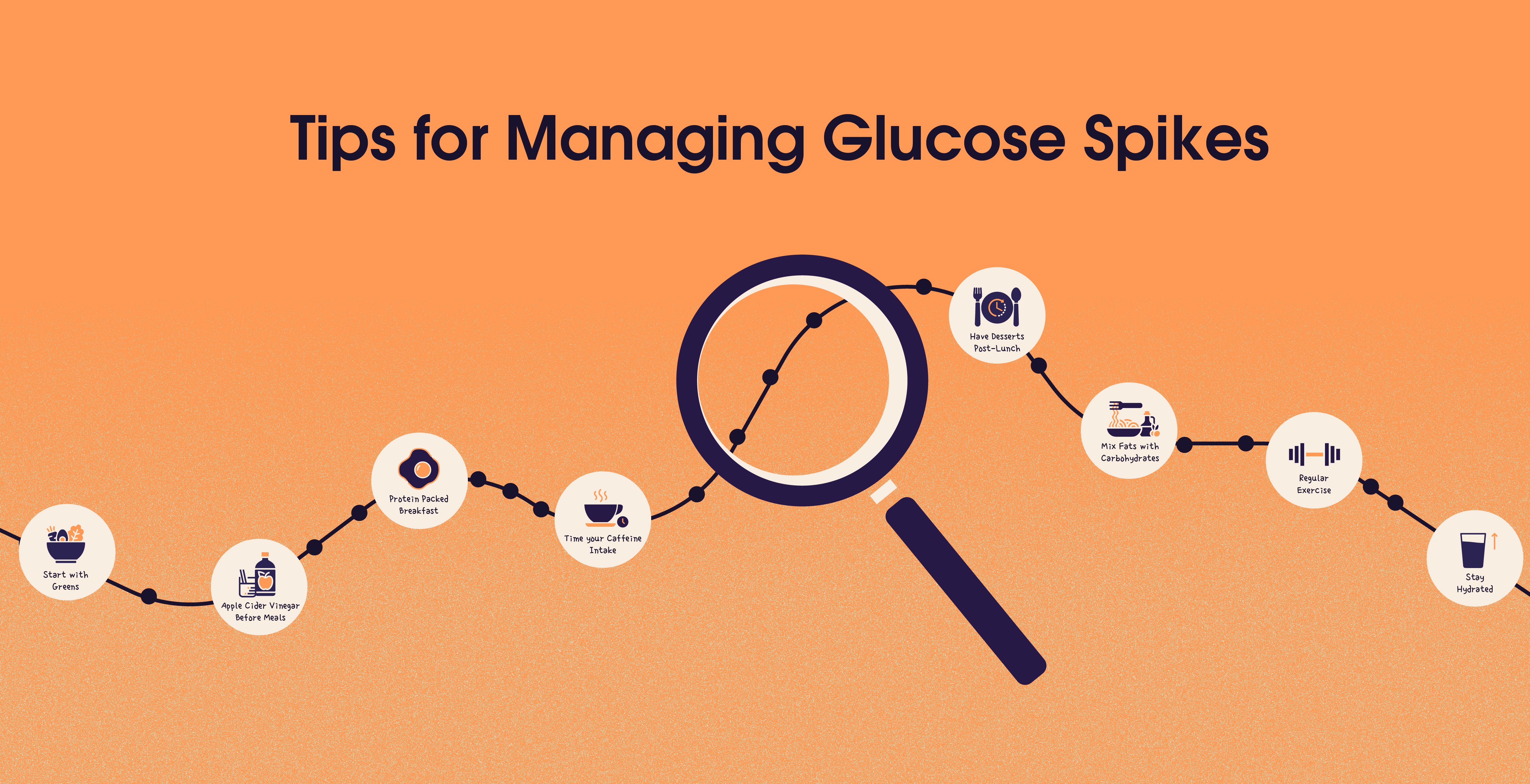


Table Of Contents
Tired of dealing with those annoying blood sugar spikes after meals? You're not alone. Many of us go through the uncomfortable highs and lows of uneven blood sugar levels, which can disrupt your whole day. But here's some good news: Managing your glucose might be easier than you think. Whether you have diabetes, are at risk, or just want to live a more balanced lifestyle, there are straightforward strategies that can help keep things stable. Ready to feel better and stay energized? Before we get into the tips, let's quickly understand a few basics.
Highlights
Eating vegetables before carbs can reduce blood sugar spikes by up to 30%.
A tablespoon of apple cider vinegar before meals can help manage glucose levels by blocking starch-digesting enzymes.
A short walk or calf exercises after meals can quickly lower blood sugar by using glucose for energy.
Starting the day with high-protein foods prevents the rapid sugar spikes that carb-heavy meals cause.
Drinking plenty of water throughout the day helps control blood sugar levels and prevents overeating.
What Is a Glucose Spike?
When you eat foods high in carbs and sugars, they quickly break down into glucose, which floods into your bloodstream, causing what's known as a glucose spike or blood sugar spikes. Typically, the pancreas responds by releasing insulin, which helps cells absorb glucose and lowers blood sugar to a normal level.For those with diabetes, however, this process is impaired. The pancreas either doesn't produce enough insulin or the body's cells don't respond properly to insulin. As a result, glucose remains in the bloodstream for too long, leading to feelings of fatigue and sluggishness because the body isn't using the glucose efficiently.
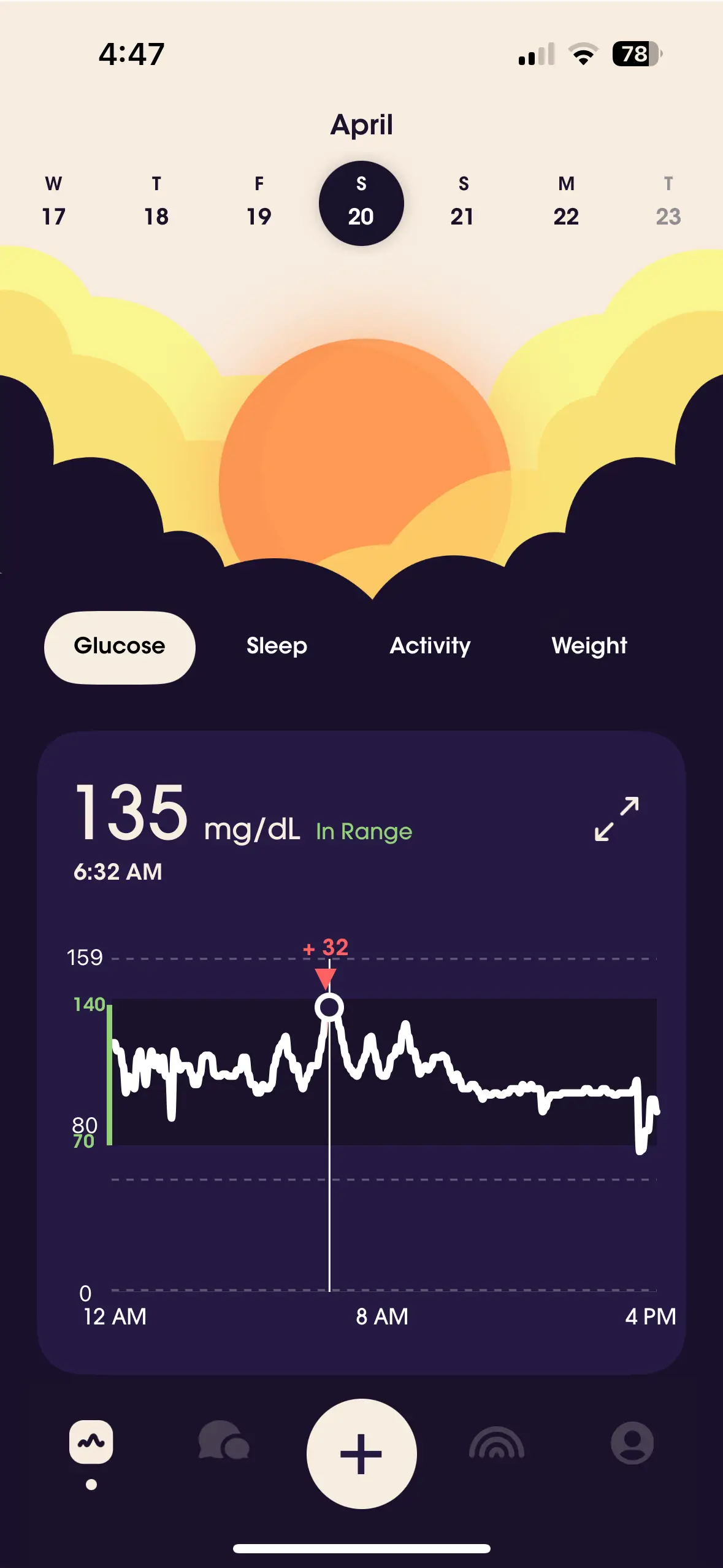
What Triggers a Glucose Spikes?
Eating refined carbohydrates and sugars is the main trigger for glucose spikes. These foods are digested quickly, leading to a rapid increase in glucose. In healthy people, insulin helps to quickly move glucose into cells for energy or storage, reducing blood sugar levels. In people with diabetes, this insulin response is less effective, causing glucose to stay in the blood longer.
Why Are Glucose Spikes a Concern?
Regular glucose spikes can strain the pancreas, which is forced to produce insulin more frequently. This can lead to "burnout," where the pancreas eventually produces less insulin, potentially leading to type 2 diabetes.
Additionally, prolonged high glucose levels can damage blood vessels and nerves. This damage can cause inflammation and increase the body's stress levels, accelerating aging and raising the risk of heart disease and strokes.
High glucose levels can also lead to nerve damage, known as neuropathy, which often causes numbness or pain in the extremities. This increases the risk of injuries and infections, particularly in the feet.
Managing glucose spikes is essential not only for maintaining daily energy and well-being but also for protecting long-term health and preventing severe complications.
Tips & Tricks To Manage Glucose Spikes
Start With the Greens: The Power of Meal Sequencing
Why not start your meal with a salad or some steamed veggies? Eating vegetables first can reduce your blood sugar response by up to 30%. High in fiber, vegetables slow down how quickly sugars enter your bloodstream, preventing those overwhelming spikes when you eventually eat carbs. So, next time you sit down to eat, begin with some greens. It's a simple swap with significant benefits.
Read more about meal sequencing for prediabetes and diabetes here.
The ACV Ritual: Apple Cider Vinegar Before Meals
A tablespoon of apple cider vinegar before meals can work wonders for your blood sugar levels. The acetic acid in vinegar helps block the enzymes that break down starches, preventing every carb you eat from turning into glucose in your blood. You can't eat unlimited carbs, but this can help manage the sugars from a well-rounded meal. Try mixing it into a tall glass of water or drizzling it over your starter salad for an easy, impactful habit.
Read more here about how you can eat your favorite foods with ACV as a hack. Yes, desserts too!
Get Moving: Post-Meal Activity
Consider a short walk or some soleus push ups right after you eat. Light exercise makes your muscles demand more energy, and they draw this energy from the glucose in your blood, lowering your sugar levels effectively and quickly. Even just a 10-minute walk or a few calf raises can make a noticeable difference.
Protein-Packed & Savory Mornings
Begin your day with a high-protein breakfast instead of reaching for carbs. Protein digests slowly, preventing the rapid sugar spikes that sugary breakfasts can cause. Opt for eggs, Greek yogurt, or a smoothie packed with protein powder. Not only will this keep you satiated longer, but it will also help maintain steady blood sugar levels throughout the morning.
Timing Your Caffeine
Having coffee on an empty stomach can unexpectedly spike your blood sugar, thanks to caffeine's stimulatory effects on your body. To avoid this, enjoy your coffee with food, preferably during or after breakfast that includes protein, which can help counteract the caffeine's effects on your blood sugar.

Dessert Done Right: Timing and Pairing
If you love desserts, timing them right can help manage sugar spikes. Eat your sweet treats right after a protein and fiber-rich meal. This combination slows digestion, which means the sugar from your dessert is released slowly into your bloodstream. Indulging post-lunch is ideal, as you're more active during the day and your body can utilize the energy more efficiently.
Dress Your Carbs: Mix in Fats and Acids
Adding fats or acids to your carbohydrates can significantly alter how your body digests them. For example, pairing olive oil with pasta or a vinaigrette with your sandwich slows down carbohydrate digestion, thanks to the healthy fats and acids involved. This not only boosts the flavor of your meals but also helps moderate your blood sugar response.
Regular Exercise: Keep Active
Now this is a little different from your post-meal exercises and yes, you need both! Regular physical activity is essential for overall health and can significantly help manage blood sugar levels. It not only uses glucose as energy but also improves insulin sensitivity, making your body better at managing sugar levels. Engage in activities you enjoy, which makes it easier to stick to a routine. Here are some types of exercises you can incorporate:
Aerobic Exercises: Activities like brisk walking, running, cycling, and swimming increase your heart rate and can greatly aid in glucose control. These activities help your muscles absorb sugar from your blood, which can lower blood sugar levels.
Strength Training: Incorporating strength training such as weight lifting, using resistance bands, or body-weight exercises like push-ups and squats can help build muscle mass. More muscle means your body has more places to store glucose which reduces blood sugar spikes.
Flexibility and Balance Exercises: Yoga and Pilates improve flexibility, balance, and strength. They also help reduce stress levels, which can positively impact blood glucose levels.
Team Sports: Engaging in team sports such as basketball, soccer, or tennis is not only fun but also a great way to improve insulin sensitivity through varied and dynamic movements.
Short Burst Activities: High-intensity interval training (HIIT) involves short bursts of intense activity alternated with recovery periods. This type of exercise can be particularly effective for blood sugar control.
Each type of exercise offers unique benefits, so a combination can be the most effective way to manage glucose levels.
Read more about the types of exercises that are great for you to manage glucose spikes
Stay Hydrated: Drink Plenty of Water
Drinking enough water is key for blood sugar control. It helps flush out excess sugar through urine and keeps your blood circulation efficient. Staying hydrated also helps curb appetite and prevent overeating, which is crucial for maintaining stable blood sugar levels. Make sure to drink water throughout the day, not just when you're thirsty.
Read more about other lifestyle changes you can make to manage your blood sugar spikes
Conclusion
Managing glucose spikes is key, not just for those with prediabetes or diabetes, but for anyone looking to keep their energy up and stay healthy. By starting your meals with veggies, adding a bit of apple cider vinegar to your dishes, keeping active, and being smart about when you have caffeine and sweets, you can really get a handle on your blood sugar. Don't forget, regular exercise and drinking plenty of water are also huge for keeping those levels steady. Start incorporating these simple changes into your daily routine and you'll not only see your blood sugar improve, but you'll feel better overall. Small steps can make a big difference, so stick with it and enjoy the benefits of balanced blood sugar every day.
References
Tired of dealing with those annoying blood sugar spikes after meals? You're not alone. Many of us go through the uncomfortable highs and lows of uneven blood sugar levels, which can disrupt your whole day. But here's some good news: Managing your glucose might be easier than you think. Whether you have diabetes, are at risk, or just want to live a more balanced lifestyle, there are straightforward strategies that can help keep things stable. Ready to feel better and stay energized? Before we get into the tips, let's quickly understand a few basics.
Highlights
Eating vegetables before carbs can reduce blood sugar spikes by up to 30%.
A tablespoon of apple cider vinegar before meals can help manage glucose levels by blocking starch-digesting enzymes.
A short walk or calf exercises after meals can quickly lower blood sugar by using glucose for energy.
Starting the day with high-protein foods prevents the rapid sugar spikes that carb-heavy meals cause.
Drinking plenty of water throughout the day helps control blood sugar levels and prevents overeating.
What Is a Glucose Spike?
When you eat foods high in carbs and sugars, they quickly break down into glucose, which floods into your bloodstream, causing what's known as a glucose spike or blood sugar spikes. Typically, the pancreas responds by releasing insulin, which helps cells absorb glucose and lowers blood sugar to a normal level.For those with diabetes, however, this process is impaired. The pancreas either doesn't produce enough insulin or the body's cells don't respond properly to insulin. As a result, glucose remains in the bloodstream for too long, leading to feelings of fatigue and sluggishness because the body isn't using the glucose efficiently.

What Triggers a Glucose Spikes?
Eating refined carbohydrates and sugars is the main trigger for glucose spikes. These foods are digested quickly, leading to a rapid increase in glucose. In healthy people, insulin helps to quickly move glucose into cells for energy or storage, reducing blood sugar levels. In people with diabetes, this insulin response is less effective, causing glucose to stay in the blood longer.
Why Are Glucose Spikes a Concern?
Regular glucose spikes can strain the pancreas, which is forced to produce insulin more frequently. This can lead to "burnout," where the pancreas eventually produces less insulin, potentially leading to type 2 diabetes.
Additionally, prolonged high glucose levels can damage blood vessels and nerves. This damage can cause inflammation and increase the body's stress levels, accelerating aging and raising the risk of heart disease and strokes.
High glucose levels can also lead to nerve damage, known as neuropathy, which often causes numbness or pain in the extremities. This increases the risk of injuries and infections, particularly in the feet.
Managing glucose spikes is essential not only for maintaining daily energy and well-being but also for protecting long-term health and preventing severe complications.
Tips & Tricks To Manage Glucose Spikes
Start With the Greens: The Power of Meal Sequencing
Why not start your meal with a salad or some steamed veggies? Eating vegetables first can reduce your blood sugar response by up to 30%. High in fiber, vegetables slow down how quickly sugars enter your bloodstream, preventing those overwhelming spikes when you eventually eat carbs. So, next time you sit down to eat, begin with some greens. It's a simple swap with significant benefits.
Read more about meal sequencing for prediabetes and diabetes here.
The ACV Ritual: Apple Cider Vinegar Before Meals
A tablespoon of apple cider vinegar before meals can work wonders for your blood sugar levels. The acetic acid in vinegar helps block the enzymes that break down starches, preventing every carb you eat from turning into glucose in your blood. You can't eat unlimited carbs, but this can help manage the sugars from a well-rounded meal. Try mixing it into a tall glass of water or drizzling it over your starter salad for an easy, impactful habit.
Read more here about how you can eat your favorite foods with ACV as a hack. Yes, desserts too!
Get Moving: Post-Meal Activity
Consider a short walk or some soleus push ups right after you eat. Light exercise makes your muscles demand more energy, and they draw this energy from the glucose in your blood, lowering your sugar levels effectively and quickly. Even just a 10-minute walk or a few calf raises can make a noticeable difference.
Protein-Packed & Savory Mornings
Begin your day with a high-protein breakfast instead of reaching for carbs. Protein digests slowly, preventing the rapid sugar spikes that sugary breakfasts can cause. Opt for eggs, Greek yogurt, or a smoothie packed with protein powder. Not only will this keep you satiated longer, but it will also help maintain steady blood sugar levels throughout the morning.
Timing Your Caffeine
Having coffee on an empty stomach can unexpectedly spike your blood sugar, thanks to caffeine's stimulatory effects on your body. To avoid this, enjoy your coffee with food, preferably during or after breakfast that includes protein, which can help counteract the caffeine's effects on your blood sugar.

Dessert Done Right: Timing and Pairing
If you love desserts, timing them right can help manage sugar spikes. Eat your sweet treats right after a protein and fiber-rich meal. This combination slows digestion, which means the sugar from your dessert is released slowly into your bloodstream. Indulging post-lunch is ideal, as you're more active during the day and your body can utilize the energy more efficiently.
Dress Your Carbs: Mix in Fats and Acids
Adding fats or acids to your carbohydrates can significantly alter how your body digests them. For example, pairing olive oil with pasta or a vinaigrette with your sandwich slows down carbohydrate digestion, thanks to the healthy fats and acids involved. This not only boosts the flavor of your meals but also helps moderate your blood sugar response.
Regular Exercise: Keep Active
Now this is a little different from your post-meal exercises and yes, you need both! Regular physical activity is essential for overall health and can significantly help manage blood sugar levels. It not only uses glucose as energy but also improves insulin sensitivity, making your body better at managing sugar levels. Engage in activities you enjoy, which makes it easier to stick to a routine. Here are some types of exercises you can incorporate:
Aerobic Exercises: Activities like brisk walking, running, cycling, and swimming increase your heart rate and can greatly aid in glucose control. These activities help your muscles absorb sugar from your blood, which can lower blood sugar levels.
Strength Training: Incorporating strength training such as weight lifting, using resistance bands, or body-weight exercises like push-ups and squats can help build muscle mass. More muscle means your body has more places to store glucose which reduces blood sugar spikes.
Flexibility and Balance Exercises: Yoga and Pilates improve flexibility, balance, and strength. They also help reduce stress levels, which can positively impact blood glucose levels.
Team Sports: Engaging in team sports such as basketball, soccer, or tennis is not only fun but also a great way to improve insulin sensitivity through varied and dynamic movements.
Short Burst Activities: High-intensity interval training (HIIT) involves short bursts of intense activity alternated with recovery periods. This type of exercise can be particularly effective for blood sugar control.
Each type of exercise offers unique benefits, so a combination can be the most effective way to manage glucose levels.
Read more about the types of exercises that are great for you to manage glucose spikes
Stay Hydrated: Drink Plenty of Water
Drinking enough water is key for blood sugar control. It helps flush out excess sugar through urine and keeps your blood circulation efficient. Staying hydrated also helps curb appetite and prevent overeating, which is crucial for maintaining stable blood sugar levels. Make sure to drink water throughout the day, not just when you're thirsty.
Read more about other lifestyle changes you can make to manage your blood sugar spikes
Conclusion
Managing glucose spikes is key, not just for those with prediabetes or diabetes, but for anyone looking to keep their energy up and stay healthy. By starting your meals with veggies, adding a bit of apple cider vinegar to your dishes, keeping active, and being smart about when you have caffeine and sweets, you can really get a handle on your blood sugar. Don't forget, regular exercise and drinking plenty of water are also huge for keeping those levels steady. Start incorporating these simple changes into your daily routine and you'll not only see your blood sugar improve, but you'll feel better overall. Small steps can make a big difference, so stick with it and enjoy the benefits of balanced blood sugar every day.
References
Table Of Contents
Table Of Contents
Table Of Contents
Read More
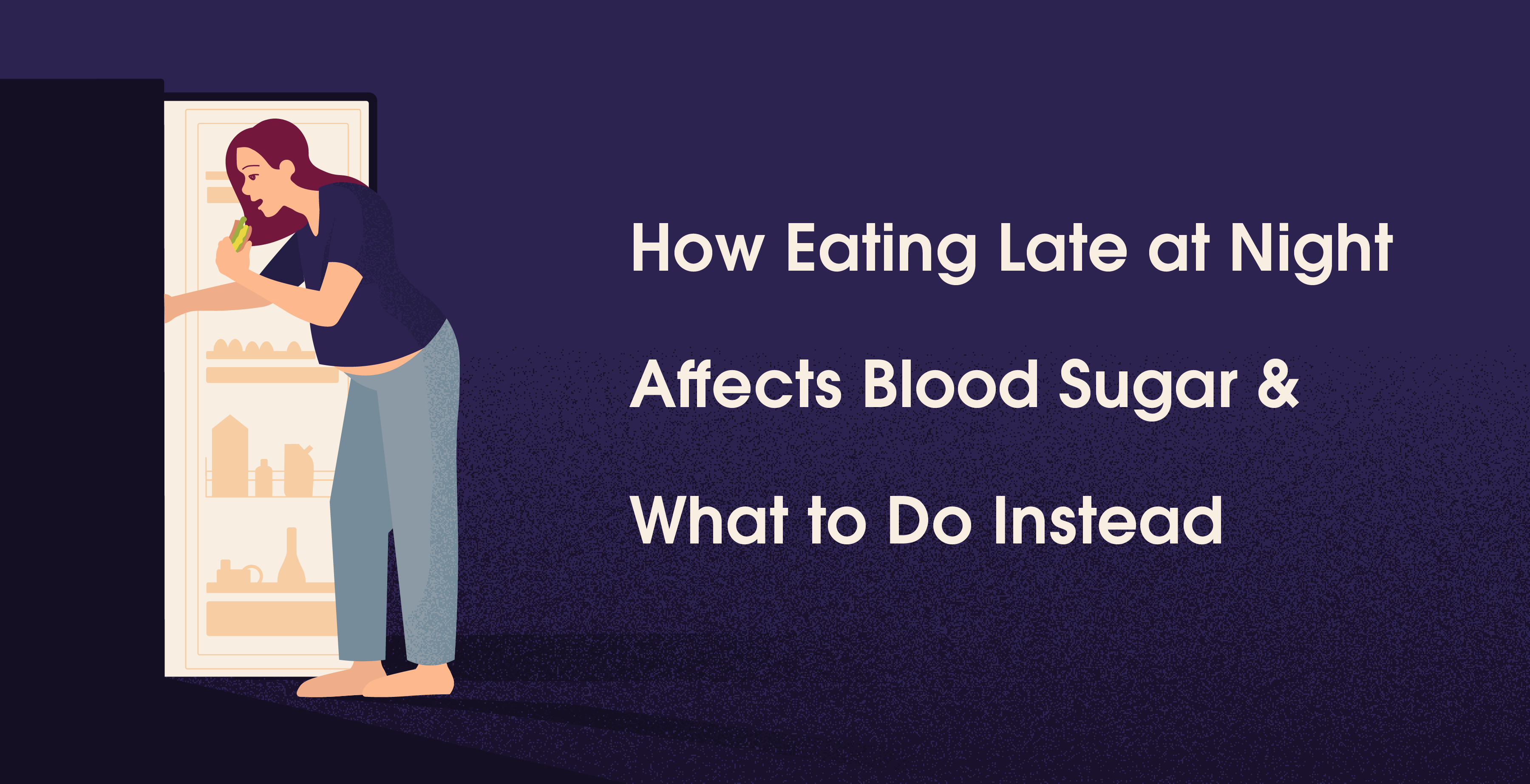

Mar 25, 2025
Sayfali Rawlani
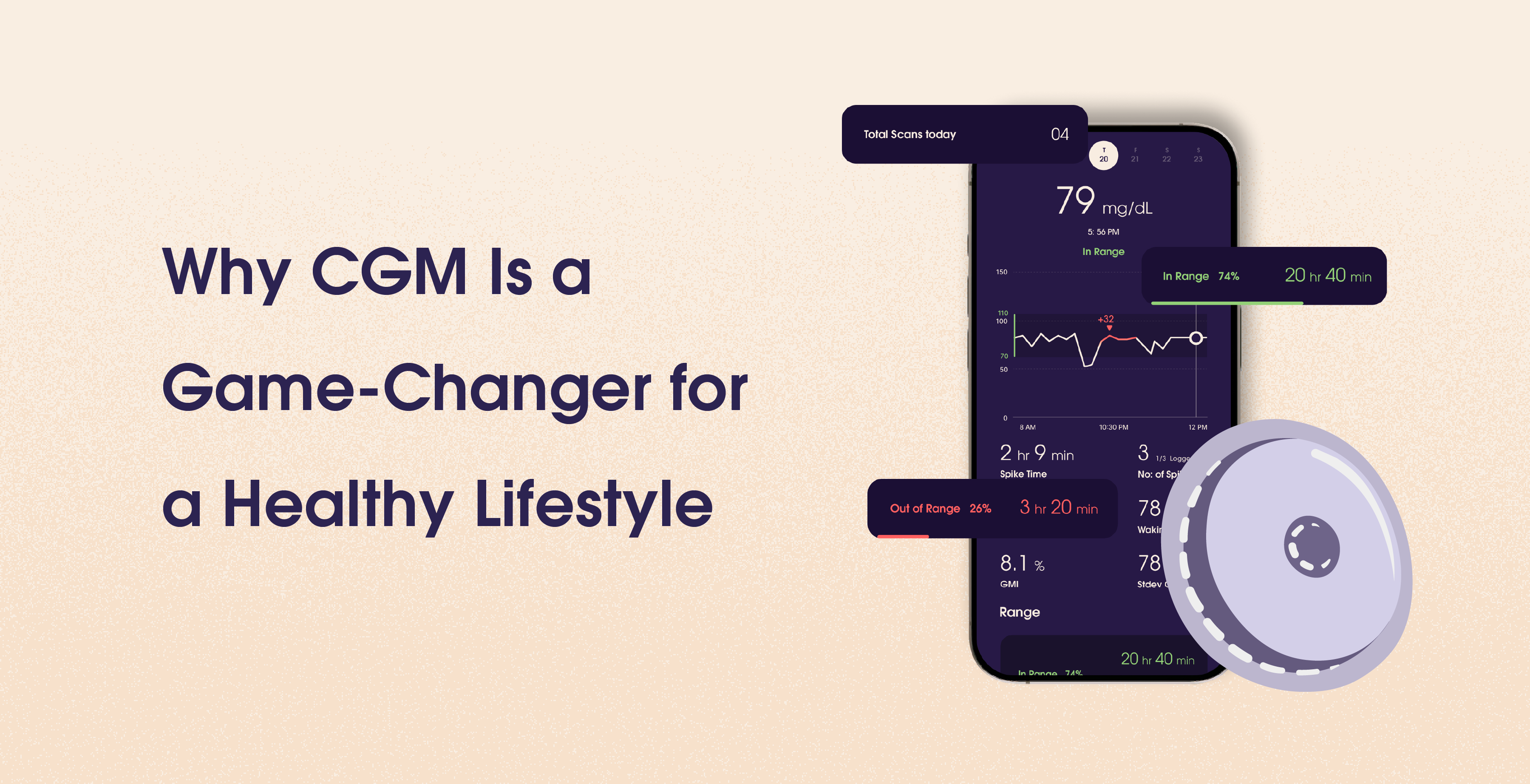

Mar 20, 2025
Sayfali Rawlani
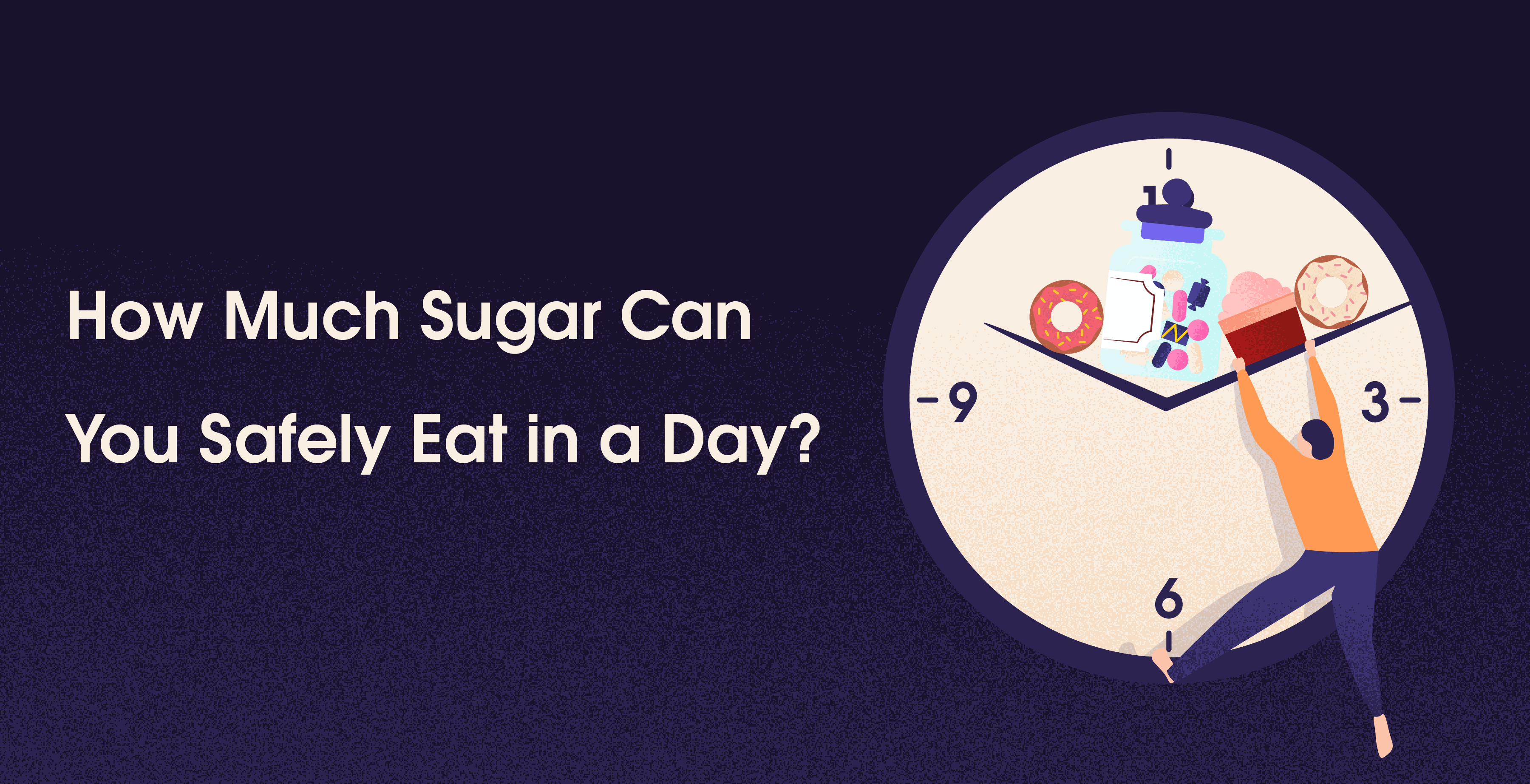

Mar 6, 2025
Sayfali Rawlani



Company
Copyright © 2025 trst health. All right reserved.

